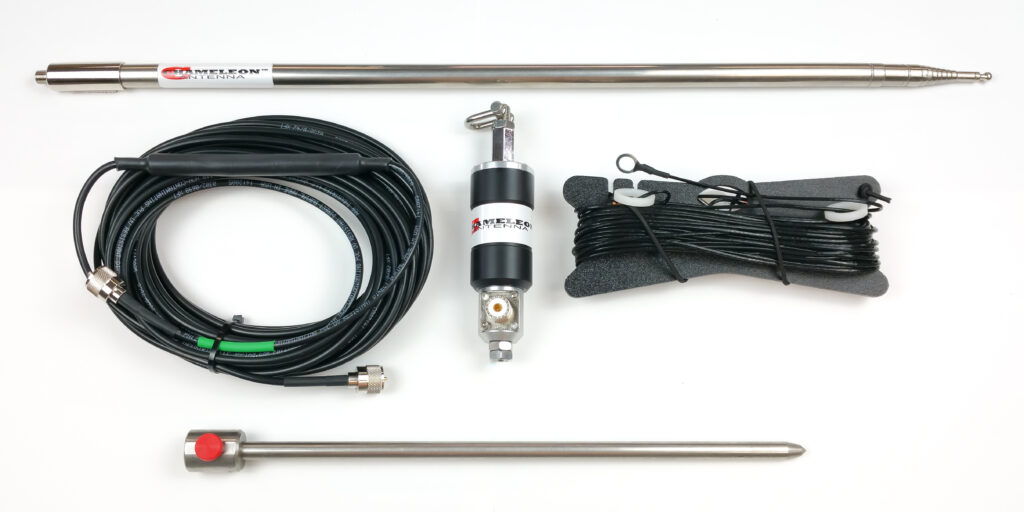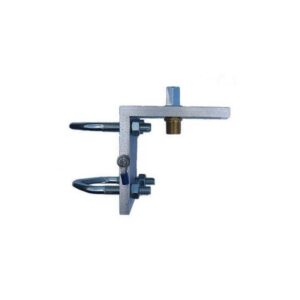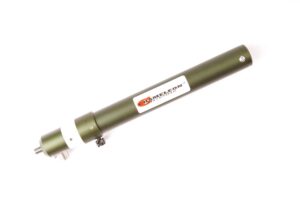Working a DXCC Award from a City Apartment Leave a comment
Some hams living in the city abandon the amateur radio hobby because a city home or apartment building is perceived to be very “HF-unfriendly.” It is true that a country house in a rural place is many times better for serious DX’ing, but living in an apartment does not necessarily mean that ham radio activity can’t take place at all.
In this article, we will showcase how the MPAS Lite antenna is a magnificent solution to situations where a normal antenna can’t be deployed. As an example, I will share how I deployed the MPAS Mini on my city balcony and give you an idea of what is possible. The proof of concept is how I worked a 100 DXCC in 33 days using this installation, enough to claim a 17-meter band DXCC award.
When moving to a new apartment in 2020, I wanted to set up a smaller antenna just to be able to quickly test run radios and to see what was possible from my new QTH. I also like to have communication capability in case of an emergency or power outage. Serious DXing and contesting is done from my contest station on the coast, but being able to get on the air in the city is important to me.
The Rational of a Broadband Antenna
Looking at my options, I quickly decided that a small broadband vertical on the balcony rail was the best solution. I also wanted an antenna that is quick to take down or shorten for lesser visual impact. Why a broadband antenna, you might ask? A tuned antenna is more efficient, isn’t it? Well, after trying several resonant antennas, I decided that there was too much hassle for too small a benefit. Yes, a resonant antenna is more efficient when tuned, but a small resonant antenna is also very narrow-banded. The hassle of changing antennas for every band change and for lower bands to retain the acceptable SWR when going from SSB to CW portions of the band made me conclude that a broadband antenna, despite its lower efficiency, is preferable to me. You might think differently, but for me, it was the right decision. At the end of this post, I will also give you an idea for a resonant antenna solution.
The MPAS LITE as a Balcony Antenna

My antenna choice came down to the MPAS-LITE from Chameleon Antenna. This kit consists of Chameleon’s HYBRID-MICRO antenna base with a transformer, a 5.7-meter sturdy telescopic whip, and a ground stake (which I don’t use for the balcony installation), an 18-meter antenna wire, and finally a 15-meter coax with an RFI choke.

I don’t use the ground stake of the kit; instead, I use the type of antenna mount developed for truck mirrors with a 3/8 thread, which is secured to the balcony rail. For a temporary installation, you could consider using the Chameleon Jaw Mount or Universal Clamp Mount, whichever fits your situation best. These mounts make it easy to quickly uninstall the complete antenna to bring it for a POTA, SOTA, or other portable activity.
The antenna wire is cut up into suitable lengths and used for counterpoise wires. I use cable ties to attach these wires to the balcony rail. Another option is to ground the antenna’s mount to the rail and use the rail as a counterpoise, but my rail is made of painted aluminum with sections joined together in a way that electrical contact isn’t guaranteed. But the counterpoise wires will, of course, couple to the rail, so the rail is adding to the overall counterpoise the antenna sees.
In addition to the MPAS-LITE, you would need a transceiver with a built-in antenna tuner. With this in place, you should now be able to get on the air and make some good contacts. Expect good performance on 20 meters and up. With the telescopic whip fully extended, it represents a quarter wavelength on the 20-meter band and half a wavelength on 10 meters. On lower bands, performance will decrease, but 40-meter operation is still acceptable within Europe, and I am able to check in most of the time on local 80-meter nets within NVIS range.
Points of Improvements to Consider
- Add one RFI choke to the kit and place one choke before the coax cable enters the building and the other close to the radio. This will block RF from flowing through the coax shield, efficiently limiting RFI feedback when transmitting. It will also improve receive performance as the coax will pick up less RFI generated indoors from LED lights, switched power supplies, and other electronics.
- Consider adding a remote tuner at the antenna feed point. This will improve efficiency as the coax will no longer be seen by the transceiver as part of the antenna.
- Add a spring at the bottom of the telescopic whip if you are in a windy location. The whip is sturdy and flexible, but letting it sway with the wind will extend its life.
A Tuned Version of the Balcony Antenna
If you prefer a tuned antenna on the balcony rail, instead of the MPAS LITE kit broadband antenna, purchase the Chameleon MCC tuneable loading coil plus the SS58 whip. This will provide you with a vertical antenna that can manually be tuned to resonance. With this solution an external tuner will add less of a benefit. You will also have to order the coaxial cable with choke, antenna mount and radial wire separately. The premium solution wold be to get both the MPAS LITE kit and the MCC Tuneable Loading Coil, but keep in mind that the loger SS17 Stainless Steel Whip could put too much strain on the MCC, especially in windy conditions.
100 DXCC in 33 Days!
Using the MPAS LITE on my balcony I was able to work 100 DXCC on the 17 meter band in just 33 days. My setup considered of an Icom IC-705 and a PA500 amplifier from DIY599. Most of the contacts were in FT8, but some SSB and CW contacts were also logged. The small amplifier was run conservatively at around 25-30 watts. The effort was made in 2022, before the solar cycle really took off.
Product in this Article
- Chameleon MPAS LITE, Portable Broadband Vertical
- Chameleon Jaw Mount
- Chameleon Universal Clamp Mount
- Chameleon RFI Choke
- 3/8 Antenna Mast Mount
- Chameleon MCC Tuneable Loading Coil
- SS58 xx cm Stainless Steel Telescopic Whip
- Icom IC-705
- PA500 Ultra-Compact 50W HF Amplifier with ATU
NOTE: If you don’t plan to use the MPAS LITE ground-mounted in a portable configuration, ask us for an offer of the kit without the Spike Mount.



